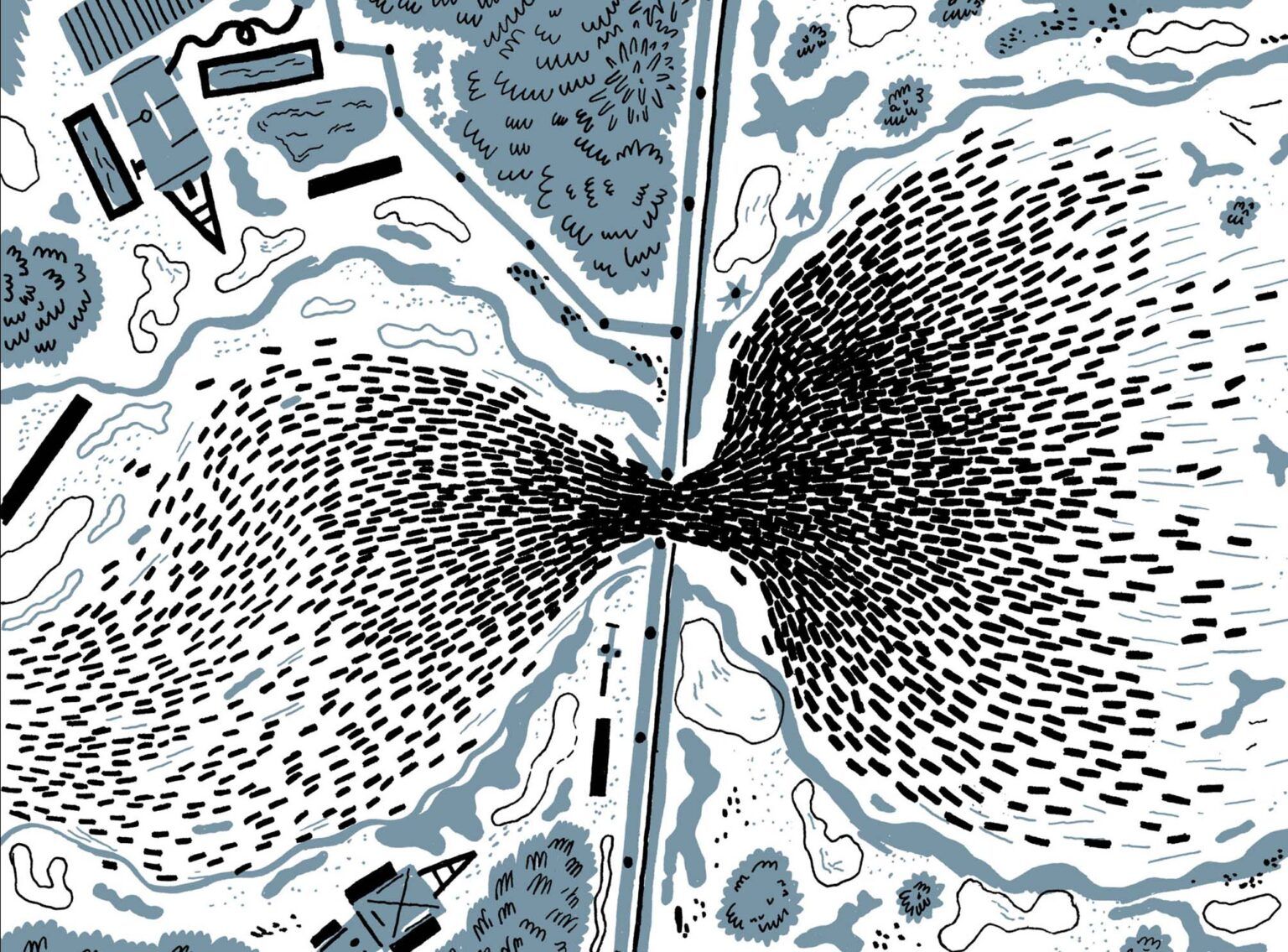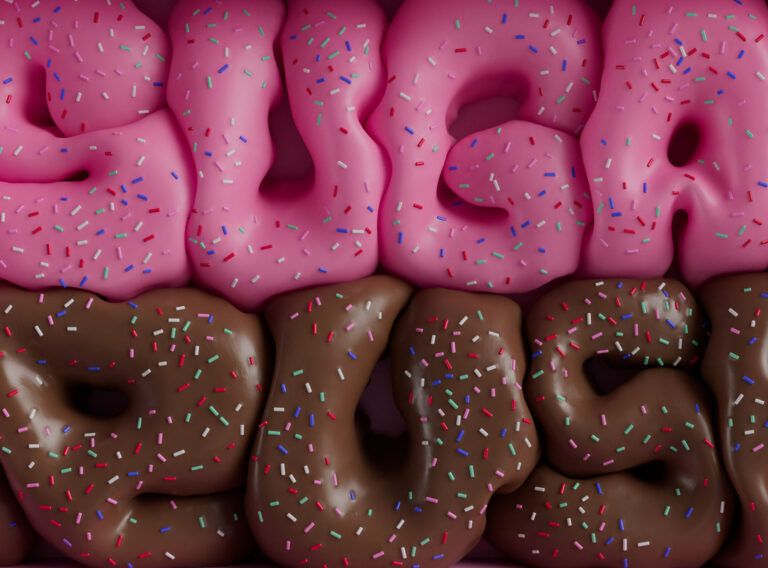MEDITATION IN CHAOS, WILDNESS IN ALGORITHM
A repetitive, organised movement of a mass has fascinated the human eye since ancient times. Regular trajectories put us in a trance, captivate us and keep us in a basic ritual plane. Often, however, we breathlessly watch a seemingly chaotic movement and yet see a certain system and balance within it… Whether it is the movement of a restless water surface or its virtual algorithmic representation.
When I watched a flock of starlings ripple across the sky a few years ago, I was mesmerized and terrified at the same time. In the days that followed, I watched recordings of the phenomenon on countless YouTube videos as if I still couldn’t believe it wasn’t a digital visualization. Later, videos of gigantic schools of fish in underwater depths and drone footage of ungulates racing across the open landscape added to this fascination. It was as if I was watching a carefully rehearsed but constantly shifting ritual choreography and, at the same time, a digital modelling that was self-generated based on simple rules. Although this is a natural phenomenon, most of us today only encounter it through the screen of our devices.

ORGANIC SWARMING, THE BUTTERFLY EFFECT, AND LIQUID CRYSTALS
Strange attractors, i.e. chaotic non-linear dynamical systems, seem at first sight to be uncontrolled and completely random but in the long run a pattern, a recurring phenomenon, an estimable trajectory can be found in them. Why is it that such perplexing and unsettling movements can evoke in us an immense calm and fascination? For despite initial skepticism, it can be traced that none of their parameters are random. Mathematics and physics, within the framework of chaos theory, apply these complex trajectories to phenomena such as the butterfly effect, plate tectonics, economic development or population growth. In recent years, we have learned to observe such non-linear dynamical systems primarily through the liquid crystals of our screens in a variety of algorithmic visualizations. First, we couldn’t tear ourselves away from the moving screensavers, then came the almost obsessive fascination with the ever-generating material swarming in Cool 3D World style, and even today we never cease to be mesmerized by the sight of organic motion graphics and visualizations of juicy biological materials of generative design. At this spectacle, we feel a mixture of sensation, dismay, revulsion, and delight. However, such non-linear algorithmic movements can also be found in our original natural environment: in flocks and herds of all kinds of animal species. It is no coincidence, after all, that the Lorenz attractor, the most famous of these non-linear movements, resembles the shape of a butterfly’s wings.

NETWORK OF STARLINGS AND THE SELFISH HERD THEORY
A good example of such a random but at the same time perfectly ordered trajectory, reminiscent of an overlapping digital algorithmic animation, are the dynamic patterns of flocks of starlings during autumn migration. It is as if a network of black pixels were rippling across the sky, as if we were watching an endlessly generating dynamic structure. It is, of course, meticulous choreography without a single random element. In 2011, an interdisciplinary team of Italian scientists comprising biologists, mathematicians, and experts in computer modelling and cybernetics discovered that individual starlings are not at all interested in the movement of the entire flock, but orient themselves only according to the seven individuals that surround them in flight. This creates a fascinating self-organised structure that results from the activity of its individual parts.
Schools of underwater fish perform similarly to starlings. In this case, the viewing experience gains an additional dimension because, unlike the flocks of birds in the sky, we can physically enter this moving mass – with an oxygen bomb, we can swim among them or disperse the flock with a simple wave of the hand. The uncertainty between the digital and physical image in this case is heightened by the dense liquid environment, the darkness under the surface, and the glass of the diving goggles through which we watch the spectacle. Unlike the movement system of starlings, the fish copies only one of its neighbours and the dynamic spillover of the material mass occurs when the individual decides to change direction at random once in a while.
A similar but, at the same time, completely different experience is finally brought to us by watching the movement of herds of ungulates – because we cannot see it on the spectacular scale of the whole action except from a great height with the help of a drone. If we look at the herds of buffalo or antelope rushing across the steppe, their wildness is also written in the irregularity of their movements. However, we can much better observe a particular system in the movement of herds of livestock, such as grazing sheep. “The ‘selfish herd theory’, as this dynamic model is called, is often used to explain the emergence of herd social structures. Sheep are constantly trying to get to the safe centre of the herd: individuals congregating at the edges thus move faster, and smaller eddies form within the flock, which the sheep use to try to push each other back to the edge. The viewer thus seems to be watching a perfect, endless exchange of clusters of individual grid points on the uniform green ground of the pasture.
In spite of our present, largely virtual existence, we urgently seek contact with nature and our naturalness. A virtual interpretation of our roots is often enough to connect us to them. Powerful ritual images can be seen in the open sky or in computer algorithmic animation. The non-linear dynamic systems of flocks and herds thus become a link between the physical and the digital image, a representation of our present existence at the boundary between these two interfaces.




